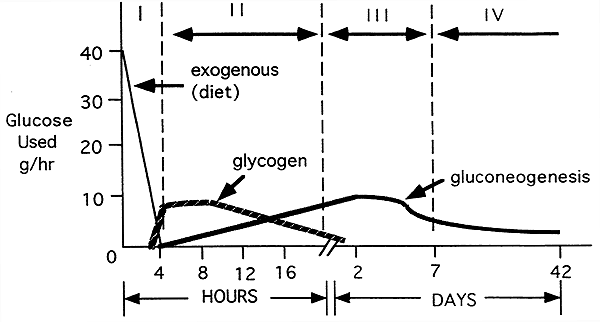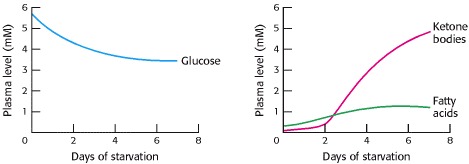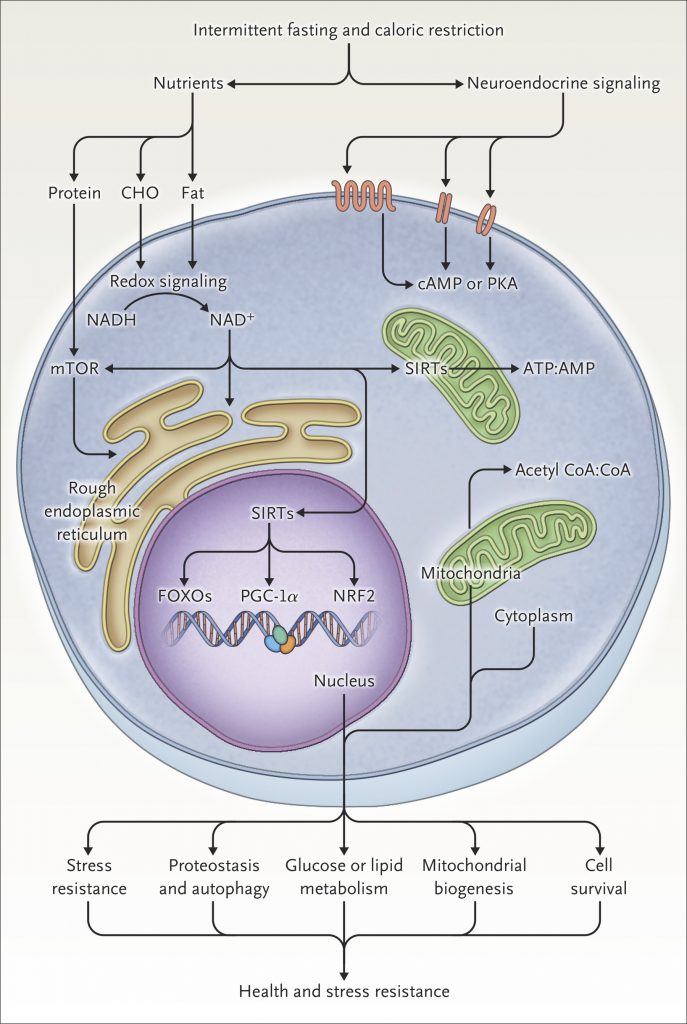I think everyone will agree with me when I say that we live in a time of consumption. The economic growth of the last century has provided us with so many different products and services that problems such as famine and war are now more of a problems of the past. Israeli historian Yuval Harari writes clearly in his book Homo Deus: “In 2014, more than 2.1 billion people were overweight, compared with 850 million who were malnourished. It is estimated that by 2030, half of humanity will be overweight. In 2010, famine and malnutrition together killed about 1 million people, while obesity killed up to 3 million. ” This post outlines almost a biblical solution for how this balance could be improved.
Fasting
Or food abstinence has been known since biblical times, but it is not just a Christian phenomenon. All the major religions regularly fasted as a form of purification in preparation for their great holidays. In fact, each of us fasts daily for several hours each day during sleep. Fasting, or not taking in any calories, is therefore a very natural state for the human body. The so-called Intermittent fasting is nothing more than limiting calorie intake to a certain time interval within one day or week (alternate day fasting). It is important to realize that intermittent fasting is not about starvation, that is, a person does not purposefully reduce his caloric intake, but only allocates his daily / weekly caloric intake to specific time intervals. Unlike the classic dogma of eating every three hours, such a "strategic" timing of calorie intake has many health benefits.
A bit of physiology
In principle, our metabolism works in two states. The anabolic state is induced by the supply of food and can be understood as a state of building and storing. Conversely, a catabolic state occurs when there is no food in the body and the body is forced to use its stored energy. By switching between these two states, the human body maintains a stable glucose level (4-6 mmol / l in blood plasma). This is very important because, for example, the brain needs a steady supply of a certain amount of glucose. In the case of hypoglycemia and a drop in plasma glucose below about 3 mmol / l, a person loses consciousness and falls into a coma, with the risk of complete functional brain failure in a short time [1]. Also, the state of hyperglycemia is dangerous because it leads to excessive insulin production, which eventually leads to insulin resistance (metabolic syndrome) and diabetes [2]. Insulin (anabolic state) together with glucagon (catabolic state) are the two main hormones by which the pancreas responds immediately to changes in blood glucose levels. Depending on the length of the fast, maintaining a stable level (homeostasis) of blood glucose can be divided into 4 phases, as shown in the graph below.

Anabolic state
Let's just say I had lunch a while ago. Depending on the amount of food I ate and its nutritional composition, my blood glucose levels start to rise. The origin of glucose is exogenous - it comes from the diet (see graph No. 1 - phase 1). The pancreas responds to this increase in glucose levels by secreting insulin. The more carbohydrates a food contains, the more insulin the pancreas produces. Thanks to insulin, glucose from the blood reaches all tissues, with the brain consuming up to 60% of glucose [3]. Thus, the main role of insulin is to lower blood glucose levels and thus maintain a state of homeostasis. Excess glucose is then first stored in the form of glycogen in the liver (approx. 100g) and muscles (approx. 400g), and after the glycogen stores are full, the remaining glucose is stored in fat [3]. Thus, an increased level of insulin in the blood signals that my body is in an anabolic state (building and storing). But what if I had a lot of work to do and instead of a snack I can only get a quick coffee without milk and sugar - no more calories, no new glucose. The glucose level begins to decline slowly, and with it the insulin level as well. My body no longer has anything to store and is slowly but surely entering…
Catabolic state
As I mentioned, the brain consumes a huge amount of energy and needs a certain supply of glucose at all times. However, I drink black coffee, so no new exogenous glucose. As my body needs new glucose (maintenance of homeostasis), it begins to secrete glucagon and other catabolic hormones (adrenaline, growth hormone, cortisol) [4]. These hormones continue to maintain a stable glucose level due to the breakdown of glycogen (stored glucose) and the gradual increase in so-called gluconeogenesis in the liver - formation of new glucose from lactate, glycerol and amino acids (see graph no. 1 - phase 2) [4, 5].
Now let's say I came home late after a busy day and fell straight to bed instead of cooking. The next day, the alarm will hit at 7:00. Again, I only catch a quick coffee and fly to work. Again, no new glucose or insulin. Glycogen in the liver is almost completely wasted. Limited production of new glucose (gluconeogenesis) and a decrease in insulin levels cause my body to increasingly use free fatty acids and ketones as an energy source. Thus, in addition to maintaining a stable blood glucose level, catabolic hormones also begin to mobilize stored fat (lipolysis - the breakdown of stored triglycerides into free fatty acids and glycerol) and increase the formation of ketones (formed during the oxidation of fatty acids) in the liver [4], which increases 8-12 hours after the last meal [10].
So how long can a person starve? After a few days without food, only red blood cells and the brain use glucose, but 70% of the brain's energy consumption is made up of ketones [7]. Catabolic hormones further mobilize fat (lipolysis) and ketone production increases sharply (see Graph 2). Since ketones and free fatty acids are the preferred source of energy at this stage, the formation of new glucose (gluconeogenesis) is suppressed (see Phase 3 of Graph 1). This is to protect the muscle mass from catabolism (amino acids from the muscles used in gluconeogenesis), because the survival of most animals is conditioned by the ability to move rapidly, which requires a large amount of muscle mass. Thus, survival during hunger depends on the amount of body fat [6]. After wasting it, amino acids are the only remaining source of energy, so muscle tissue starts to degrade followed by heart, liver or kidney failure [8].

Metabolic Switch & Benefits
I tried to explain above how it is possible that a person can survive and function completely normally even for a few days without any food. In recent years, however, scientists have gained more and more evidence that not only can a person survive fasting, but paradoxically, he can also gain a lot from fasting. However, fasting is far from just losing weight. In principle, all the benefits of fasting stem from the switching of metabolic states that directly regulate metabolic processes in every single cell of our body.
Redox reactions take place in the cells, by which the cells obtain energy from nutrients in the form of ATP. Most ATP is generated in the mitochondria - the part of the cell responsible for the so-called cellular respiration [9]. In addition to ATP, redox reactions produce other intermediates whose ratios determine whether a cell is in an anabolic / catabolic state (ATP: AMP, NADH: NAD +, Acetyl CoA: CoA) [10]. In the state of excess energy, ATP and intermediates of redox reactions are used in anabolic processes of the cell - growth and synthesis of new proteins (activation of mTOR signaling). Conversely, during energy deficiency (decrease in ATP and increase in AMP), PKA / AMPK proteins are activated, which suppress anabolic processes (mTOR) and signal a catabolic state in the cell. In this state, AMPK encourages the so-called autophagy - recycling and repair of damaged parts of the cell, and at the same time there is activation of the so-called sirtuins, which stimulate the expression of genes responsible for increasing internal defense against stress and the formation of new mitochondria [11].

We have more and more evidence that regular switching of these metabolic states improves the overall resistance and health of the body. Better glucose control, cardiovascular markers, body fat loss (insulin sensitivity) [12, 13], suppression of inflammatory processes [14] and many other potential therapeutic effects of fasting (neurological diseases, cancer, cardiovascular diseases, diabetes, asthma, multiple sclerosis, arthritis and other autoimmune diseases) [11] are all just the consequences of the adaptive reactions by which cells respond to stress (lack of energy).
As already explained, during fasting, cells activate pathways by which they remove or repair damaged molecules and increase their resistance to oxidative and metabolic stress. This condition is characterized by increased production of ketones, which begins to increase 8-12 hours after the last meal. However, the vast majority of people consume at least three meals a day, along with smaller meals in between, so that there is unfortunately not enough "switching" of metabolism.
How to start ?
Despite the growing evidence of the truly wide range of benefits and therapeutic applications that intermittent fasting brings, it is far from a popular phenomenon. It is not at all surprising that, apart from religious communities, fasting is perceived as unnatural. Every day we are bombarded with endless consumer marketing, new, specially tuned flavors and "fast food", which is available 24/7, and we don't even have to take a trip to get it - it will come to our door. Simply put, a diet consisting of breakfast, lunch, dinner and smaller snacks in between is deeply rooted in our culture.
As for how to start fasting, it is not a rocket science. The only variable that is being tweaked during fasting is time. The longer you are able to go without food, the greater the effect of fasting you stimulate.Fasting is not so much about what you eat, but when you eat. I personally started by skipping breakfast. Instead of breakfast, I ate three meals during the 8-hour window from lunch to dinner (12:00 - 20:00). If you decide to do something similar, you can expect hunger, irritability and difficulty concentrating in the morning, but these symptoms tend to disappear in about the first month [11]. Over time, you will find that going all day without food is really no problem. In the photo from my first post I'm without food for about 22 hours, I just ended up in the gym and I'm thinking about what to cook. During the week, I am used to eating only one huge meal for dinner. It suits me perfectly, I have more time during the day, I'm more productive and in the evening it's time for my calories. My only advice is to go at fasting gradually and find the regime that suits you best. If you're not so much into experiments, The New England Journal of Medicine, which I've quoted several times in this post, offers two alternatives for starting with intermittent fasting. Here you go:
| Month | Variant no. 1: Daily time interval for calorie intake | Variant no. 2: 5:2 intermittent fasting |
|---|---|---|
| 1 | 10 hour feeding window, 5 days a week | 1000 kcal / 1 day a week |
| 2 | 8 hour feeding window, 5 days a week | 1000 kcal / 2 days a week |
| 3 | 6 hour feeding window, 5 days a week | 750 kcal / 2 days a week |
| 4 - goal | 6 hour feeding window, 7 days a week | 500 kcal / 2 day a week |
Conclusion
Nowadays, getting a meal is really not a problem. It is literally just a matter of going to the store, restaurant or bistro. From a cultural standpoint, it is normal to eat several times a day, but from an evolutionary standpoint it is not normal at all. For thousands of years, securing food has been much more difficult than a 5-minute walk from the nearest store. In my first blogpost I mentioned that the intermittent fasting was the very first concept I mastered. Over time, I see this as a very important first step on my journey to better health. Thanks to regular not-eating, I taught my body again that besides constant storing, it is good to burn something here and there. Instead of constant fluctuations in insulin levels and dependence on quickly available energy (carbohydrates), I began to make more use of what I had already stored. My relationship with food simply changed, and as I gradually ceased to be a slave to food, I began to use food more to my advantage. If you are not a pregnant woman, breastfeeding mother, child, or you do not suffer from an eating disorder, I truly believe that you can only benefit from the appropriate implementation of fasting. Try it, it's free😊.
References
[1] https://www.ncbi.nlm.nih.gov/pmc/articles/PMC1838950/
[2] https://www.sciencedirect.com/science/article/abs/pii/S0753332218322406
[3] https://www.ncbi.nlm.nih.gov/pmc/articles/PMC2636990/
[4] https://www.ncbi.nlm.nih.gov/pmc/articles/PMC3755377/
[5] Physiology, Gluconeogenesis – StatPearls – NCBI Bookshelf
[6] https://academic.oup.com/jcem/article/88/9/4371/2845785
[7] https://www.ncbi.nlm.nih.gov/pmc/articles/PMC6836141/
[8] https://www.ncbi.nlm.nih.gov/books/NBK22414/
[10] https://www.cell.com/cell-metabolism/pdf/S1550-4131(15)00226-0.pdf
[11] https://www.nejm.org/doi/full/10.1056/NEJMra1905136
[12] https://pubmed.ncbi.nlm.nih.gov/17374948/
[13] https://pubmed.ncbi.nlm.nih.gov/29754952/[14] https://www.cell.com/cell/fulltext/S0092-8674(19)30850-5
